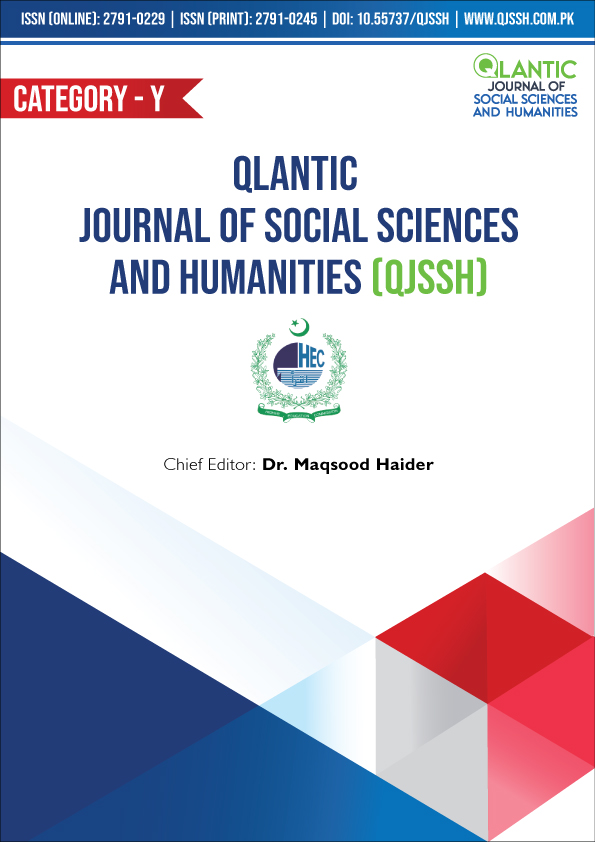Exploring Stylistic Layers in Khaled Hosseini's 'The Kite Runner': A Thorough Analysis
DOI:
https://doi.org/10.55737/qjssh.vi-i.25312Keywords:
Lexical Analysis, Syntax Analysis, Morphological Analysis, Redemption, Guilt, Friendship, Personal GrowthAbstract
This research article thoroughly explores the linguistic and stylistic choices in Khaled Hosseini's novel, "The Kite Runner." It employs a qualitative structured approach focusing on Simpson's seven language levels, including lexicon, syntax, and morphological analysis. The main objective of this study is to understand how the author's language and style reflect key themes like redemption, guilt, friendship, and personal growth. By closely examining the lines from the novel's text, the analysis uncovers the complicated ways Hosseini conveys emotions and explores complex topics through language. Furthermore, the research reveals how Hosseini expertly constructs scenes and characters to portray transformative journeys. The study also sheds light on societal themes, deepening the literary and cultural significance of the novel while establishing Khalid Hosseini as a master storyteller. However, the limitations of this study include the fact that the analysis was concentrated on the text line samples, and the focus was only on the specific themes. Thus, not all the stylistic peculiarities of the novel were captured. A complete analysis would involve text passages from other parts of the novel to understand Hosseini's stylistic choices. Secondly, the concentration only on these four themes neglects other essential aspects of the novel, especially the cultural, symbolic, and structural ones. Future research might include a comparative analysis of other works by Khalid Hosseini to provide a more comprehensive understanding of his literary works.
References
Bezar, S. A., Sadiq, M., Zehra, S., Azhar, M. A., & Mohsin, L. A. (2023). Negotiating Cultural Hybridity and Liminality in Kashua’s Second Person Singular: A Bhabhaian Analysis. PalArch's Journal of Archaeology of Egypt/Egyptology, 20(2), 295-306.
Hosseini, K. (2005). The Kite Runner. New York: Riverhead Books.
Niazi, N. (2013). A Stylistic Analysis of DH Lawrence’s ‘Sons and Lovers’. International Journal of Applied Linguistics and English Literature, 2(4), 118-126. https://doi.org/10.7575/aiac.ijalel.v.2n.4p.118
Ramzan, S., Arif, S., Nusrat, G., & Shakir, F. N. (2023). Human-nature relationship in Shafak's The Island of The Missing Trees: an ecocritical approach. PalArch's Journal of Archaeology of Egypt/Egyptology, 20(1), 473-483. https://archives.palarch.nl/index.php/jae/article/view/11711/10353
Sarfraz, M. (2022). Stylistic Analysis of Coelho's novel The Alchemist. International Journal of Linguistics, Literature & Translation, 5(3). https://doi.org/10.32996/ijllt.2022.5.3.7
Simpson, P. (2004). Stylistics, A resource book for students. London: Routledge.
Thornborrow, J., & Wareing, S. (1998). Patterns in Language: Stylistics for Students of Language and Literature. London: Routledge.
Varghese, L. M. (2012). Stylistic analysis of Emily Bronte's Wuthering Heights. IOSR Journal of Humanities and Social Science, 2(15), 46-50. http://dx.doi.org/10.9790/0837-0254650
Downloads
Published
Issue
Section
License
Copyright (c) 2025 Dr. Ali Ahmad, Basma Batool, Mehwish Zulfiqar

This work is licensed under a Creative Commons Attribution-NonCommercial 4.0 International License.





